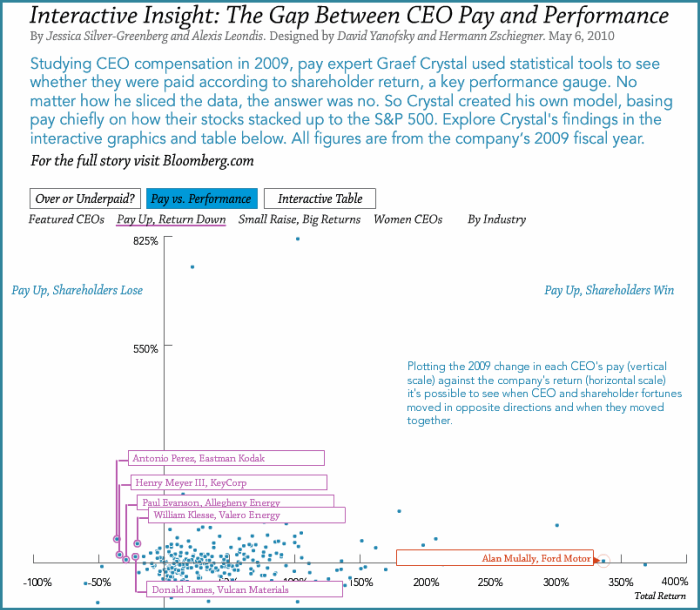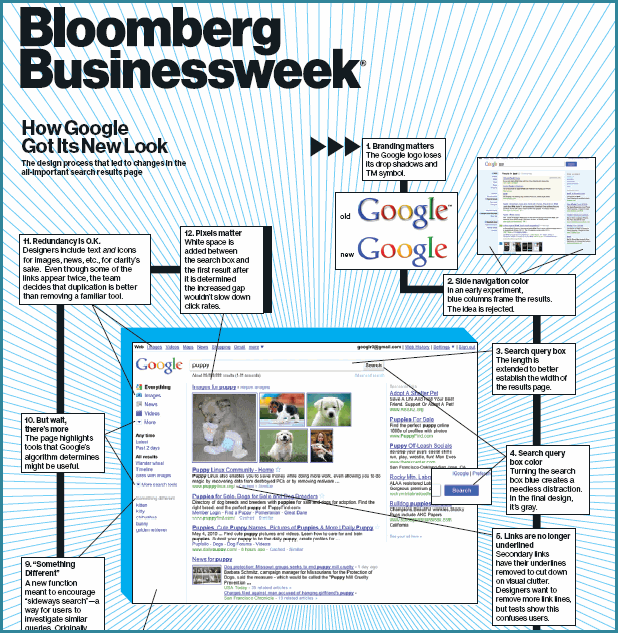When Bloomberg bought Business Week, this reader had some doubts – why did Bloomberg want to get on the Sinking Titanic- Printed Media? Readership continues to drift downward for all print media not just newspapers, although they are leading the death spiral. So why join the dance of depth?
Well upon reflection there are three upsides to Business Week. First, there is a pretty loyal following as Business Week has the imprimatur of being one of the business beacons for dozens of years – and therefore a brand that for business reporting excellence is well regarded. A survey of former MBA colleagues found Business Week a consistently cited source of information. But the likes of Fast Company,Wired and the gadget blogs like Gizmodo and enGadget starting to take readership. So there certainly is a challenge for Bloomberg to revitalize the franchise.
But Bloomberg has the underlying means. It’s news network and financial services systems generate reems of basic data that needs an outlet – and Business Week is that natural outlet. It could be thought of as the weekly dose of Bloomberg insight that makes the private paid for special services and info even more valuable.
However, the third reason is that Financial News is the one media besides Science Journals [like Scientific American and the New Scientist]that has not had to capitulate entirely to free circulation over the Web. And with the NYTimes going to a deferred paid model[readers will be allowed a nominal number of free reads and always free entry when follow a link to the NYTimes] in January 2011, Bloomberg may be preparing to follow suit. The Web edition may lead the way to more print readership.
But in that case Bloomberg Businessweek will have to do the hard work of increasing its website.s Web 2.0 savvy, much like the NYTimes has already done. And right on cue just as the new, redesigned frontage has emerged- so to have more Web 2.0 savvy presentations and graphics appeared on the the site.
Here are two such presentations that show promise and enhance the Web 2.0 chic of Bloomberg Businessweek.
The first is a story about CEO Pay versus Performance that is chock full of data and insights as to what CEO’s are making versus producing for their shareholders. The graphic is very interactive and allows users/readers to swtich among different viewpoints in just a button click second[the response time is very fast indicating all the data and coding is Web 2.0 downloaded and enabled]. Note the red border hint where the mouse has been hovered over to find who had produced one of the finest returns in 2009 – Alan Mulally of Ford yet his total compensation has only moved up slightly. This graphic is just chock full of insights that can be gained with simple button clicks. Top marks to Bloomberg Business Week. But there is more.
Google Search-page Makeover
Perhaps inspired by it own magazine redesign, Bloomberg Businessweek has an interesting story on the new look for the Google’s Search Page results. Yes, this redesign has been forced by the success of Bing and other search engines that were clearly out delivering Google. But it provides some useful facts on the nature of the thinking behind the new Google page layout.
Its these type of media distillations and presentations that are going to help Bloomberg Businessweek earn its Web chops. It will be interesting to see how company financial data and reports are revised. This is getting close to Bloomberg’s own meat and potatoes for which it charges a premium fee. How far can Bloomberg Businessweek goto match the prowess of Google and the NYTimes? Stay tuned for more coverage.



